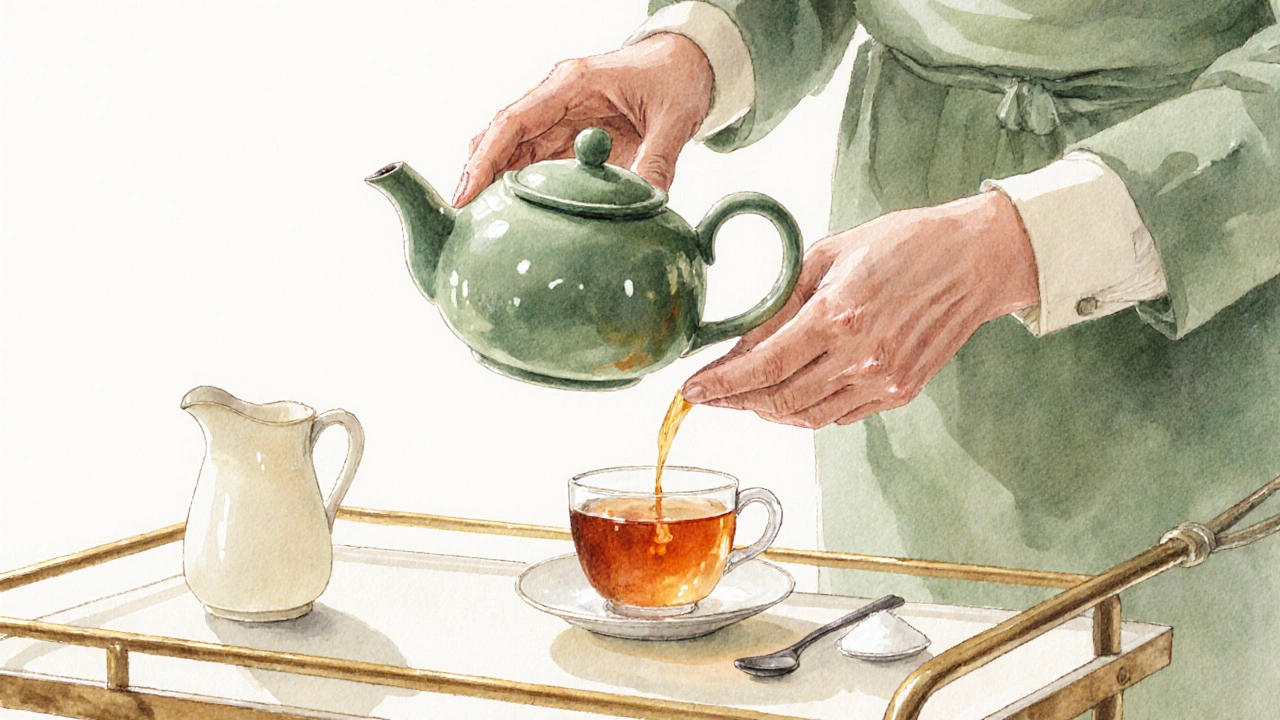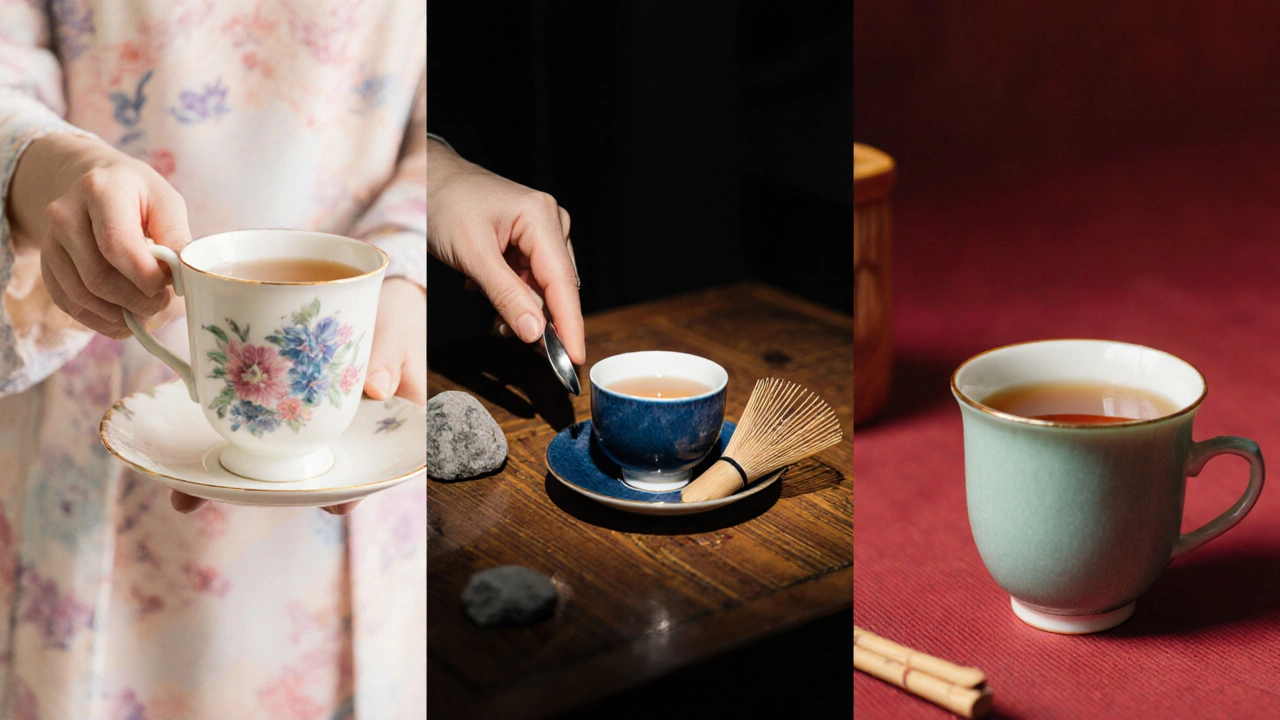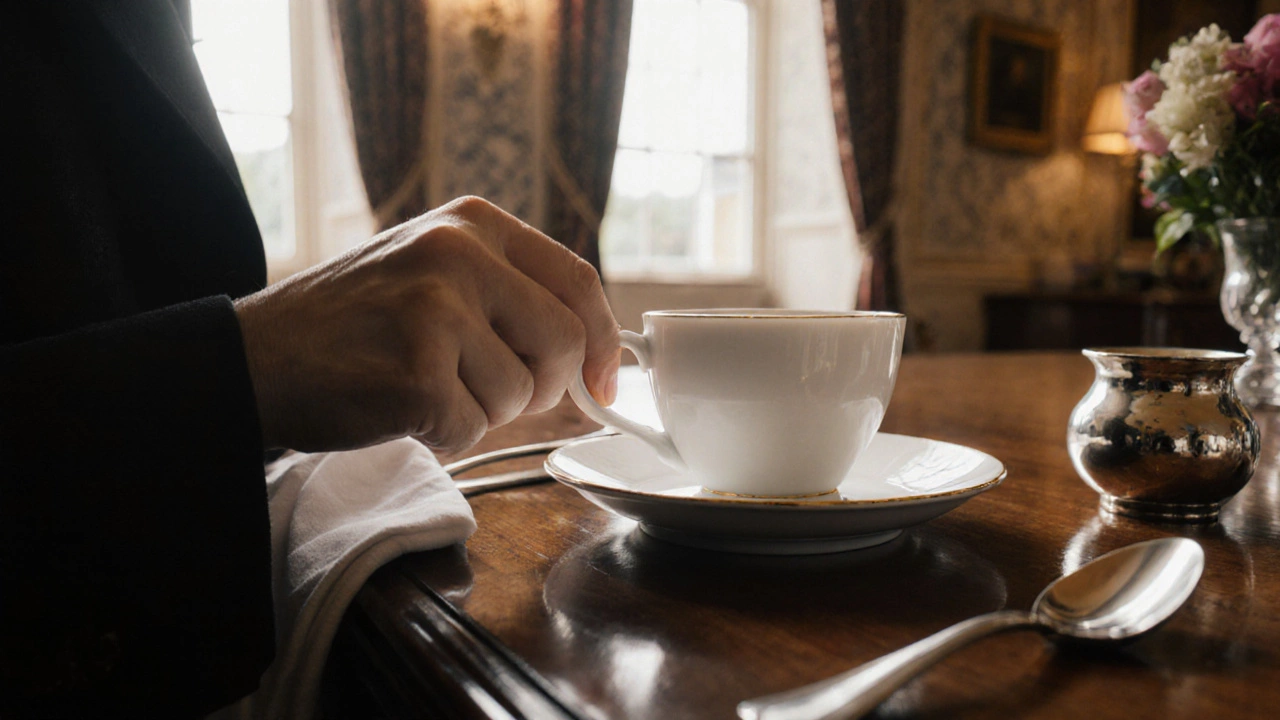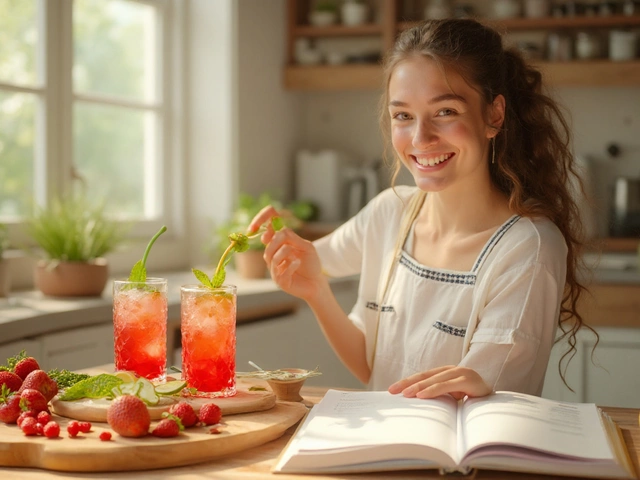Ever felt awkward sipping tea at a formal gathering? Knowing the right movements can turn a nervous sip into a smooth, confident experience. Below you’ll find the must‑know table manners that let you enjoy your brew without breaking any unwritten rules.
Key Takeaways
- Hold the teacup by the handle, never the bowl.
- Use the right side for stirring sugar or milk.
- Respect the host’s cue for pouring and refilling.
- Follow regional nuances - the UK, Japan, and China each have distinct customs.
Understanding Tea etiquette
At its core, tea etiquette is about showing respect for the host, the drink, and the people around you. It’s not a rigid rulebook; rather, it’s a set of polite habits that make the tea‑time experience pleasant for everyone.
The Basics: Cup, Saucer, and Napkin
Teacup etiquette starts with how you hold the vessel. Always grip the handle with your thumb and forefinger, letting the other fingers rest lightly on the base. This prevents tea from spilling and signals elegance.
The Saucer is not a coaster for your cup; it’s a place to set the cup down gently when you pause. When you set the cup, the handle should point to the right (the side of the guest), not toward the center of the table.
Lay your Napkin on your lap as soon as you’re seated. Fold it loosely, and if you need to dab your lips, do so discreetly. Never use the napkin to wipe the table or your hands.
Stirring, Sweetening, and Adding Milk
When adding Sugar or Milk, place the spoon on the right side of the cup. Stir gently - a quick, light motion is enough. In the UK, the classic rule is "milk first, then tea," but modern hosts often let guests decide. If you’re unsure, watch the host’s action and follow suit.
Never tip the cup to sip. Lift it with the handle, bring it to your lips, and take a small sip. Slurping is a faux pas in most Western settings, though it’s perfectly acceptable in some Asian tea ceremonies where it signals appreciation.

Pouring and Refilling: The Host’s Role
The Host typically pours the tea for guests. When serving, hold the teapot with both hands, pour gently, and keep the spout away from the cup’s rim to avoid drips. Once the host has offered, you may politely ask for a refill by saying, "May I have another, please?" If the host declines, accept gracefully.
As a guest, never pour tea for yourself unless the host explicitly invites you. This courtesy shows respect for the host’s hospitality.
Conversation Etiquette While Sipping
Tea time is often a chance for relaxed conversation. Keep your voice at a moderate volume, avoid interrupting, and use your spoon to stir silently - never clank the spoon against the cup. If you need to excuse yourself, say, "Excuse me, I'll be right back," and place your cup back on the saucer before standing.
Regional Variations: UK vs Japan vs China
| Aspect | United Kingdom | Japan | China |
|---|---|---|---|
| Holding the cup | Handle to the right, lift from saucer | Small porcelain cup, no handle, lift with both fingers | Handle or no handle depending on style, modest lift |
| Milk order | Traditionally milk first, but personal preference accepted | Rarely used; tea is usually plain | Milk seldom added; sometimes sweetened with rock sugar |
| Stirring | Gentle clockwise stir, no sound | Stirring not common; tea often poured gently | Stir with a small bamboo stick if sweetened |
| Speaking volume | Low to moderate, polite conversation | Very soft, often silent appreciation | Quiet, focus on the tea’s flavor |
| Leaving the table | Place cup back on saucer, say "Excuse me" | Bow slightly, set cup gently | Place cup down, nod politely |

Common Mistakes and How to Avoid Them
- Gripping the bowl: Always use the handle; it looks sloppy and can cause spills.
- Talking with a full mouth: Take a sip, set the cup down, then speak.
- Slurping loudly: In Western settings, keep sounds to a minimum.
- Refilling yourself: Wait for the host unless invited to serve yourself.
- Leaving the napkin on the table: Keep it on your lap until the end of the tea session.
Tip‑Sheet: Quick Checklist Before You Sit Down
- Place your napkin on your lap.
- Hold the teacup by the handle, not the bowl.
- Observe the host’s pouring style before adding milk or sugar.
- Keep conversation low‑key and avoid talking with a full cup.
- When you’re done, set the cup back on the saucer with the handle pointing right.
Frequently Asked Questions
Do I ever put milk in green tea?
Adding milk to green tea is generally considered a mismatch. The delicate flavor of green tea is best enjoyed plain or with a hint of honey.
Is it rude to ask for more sugar?
Not at all, as long as you ask politely. A simple "May I have a little more sugar, please?" is perfectly acceptable.
How long should I let the tea steep before drinking?
Typical steeping times are 3‑5 minutes for black tea, 2‑3 minutes for green tea, and 5‑7 minutes for herbal blends. Follow the host’s cue or the tea’s label if it’s a formal tasting.
Can I bring my own mug to a tea party?
Usually not. A tea party’s charm lies in the set of cups and saucers provided. If you have a special need, ask the host ahead of time.
What’s the proper way to thank the host after tea?
A genuine thank‑you, a brief compliment on the tea’s flavor, and perhaps a small token (like a home‑made treat) are all appreciated gestures.


